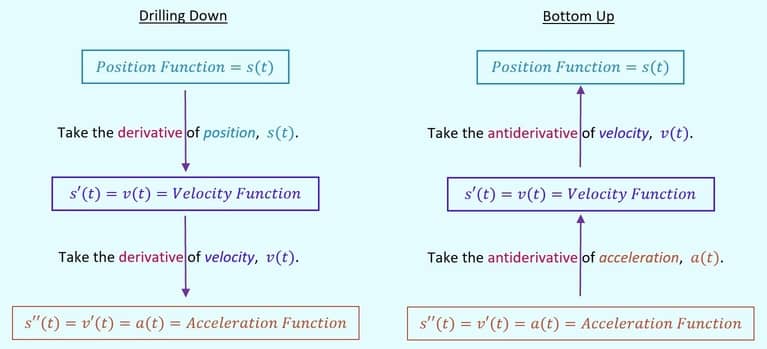Physics Relationships
The main real-world application of derivatives that they LOVE to work with more than any other is a physics relationship. I cannot stress to you enough how much they love to use this relationship, and therefore how absolutely vital it is to understand it.
You will use it early on when applying derivatives, starting at the top level (position function) and drilling down one level to velocity, and then drilling down one more level to acceleration. Later in the course you will learn how to undo derivatives (anti-derivatives), and then they will want you to take the same relationship and now be able to start at the bottom with acceleration and work your way back up a level to velocity, and then back up another level to position. Then once you know both derivatives and anti-derivatives, they will sometimes ask you to apply both processes in the same problem to find all the necessary solutions.
Meaning: Physics Relationships

Note: Sometimes they will reference speed. Speed is the absolute value of your velocity ; it is the magnitude of your velocity . It does not care what direction the motion is happening.
AP Calc Game: Speeding Up or Slowing Down
A very common question you will be asked when working with these relationships is whether the object is speeding up or slowing down .
To answer the question you just need to know if the signs (plus or minus) of your velocity and acceleration are the same or different .
Rule:
If the signs are the same , then the object is speeding up . If both velocity and acceleration are positive (+/+) or negative (–/–) it tells us the object is speeding up .
If the signs are different , then the object is slowing down . If velocity and acceleration do not share the same sign, so one is positive (+) and the other is negative ( – ), then the object is slowing down . It does not matter which is positive and which is negative; it only matters that they are different .
